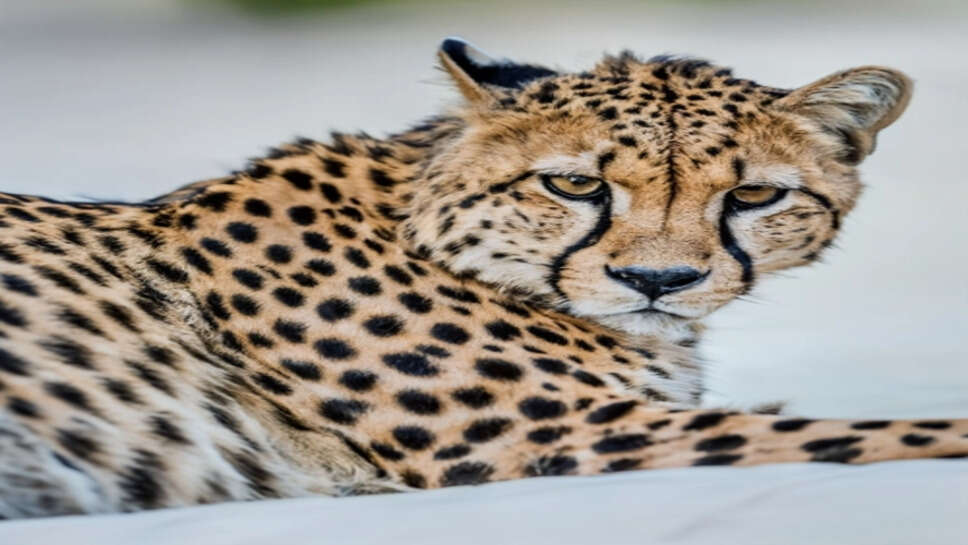Speed Kings of the Wild: Why the Cheetah Isn’t the Absolute Fastest

When most people think of the fastest animal in the world, the image that usually comes to mind is that of a cheetah—a sleek, spotted feline racing across the savannah at dizzying speeds. And they’re not wrong… if we’re strictly talking about land animals. But the natural world is full of astonishing creatures whose speeds defy human expectations. If we include air and water, the cheetah loses its “fastest animal” crown quite quickly.
Let’s break down what makes the cheetah fast, why it has earned such a legendary reputation, and how other animals—some that soar, others that dive—outpace it in ways that are no less impressive.
The Cheetah’s Incredible Speed—But on Land Only
The cheetah (Acinonyx jubatus) is undeniably the fastest land mammal. It can reach speeds of up to 100–120 kilometers per hour (62–75 mph) in short bursts covering distances up to 500 meters. What makes this possible is a unique combination of:
-
Lightweight frame
-
Flexible spine
-
Large nasal passages and lungs for maximum oxygen intake
-
Non-retractable claws for traction
-
A long tail that acts like a rudder for balance
However, this acceleration is short-lived. Cheetahs can maintain their top speed for only about 20–30 seconds before they overheat. That alone makes them impressive—but not unbeaten.
Peregrine Falcon: The True Speed Demon
If we consider absolute speed, no animal even comes close to the peregrine falcon (Falco peregrinus). During its iconic hunting stoop (a high-speed dive), this raptor can hit speeds of up to 389 kilometers per hour (242 mph)—more than three times the speed of a cheetah.
This dive is enabled by:
-
A streamlined body
-
Powerful chest muscles
-
Rigid feathers that reduce drag
-
Special nostrils that slow down air intake to prevent lung damage during high-speed plunges
Even in level flight, peregrine falcons can cruise at around 90 km/h, which rivals some of the fastest birds and land animals in regular motion.
Brazilian Free-Tailed Bat: Fastest in Level Flight
While the peregrine falcon owns the speed record for diving, the Brazilian free-tailed bat (Tadarida brasiliensis) might be the fastest in horizontal, level flight—reaching speeds of 160 km/h (99 mph). That’s still significantly faster than a cheetah’s top sprint and entirely unaided by diving or gravity.
The bat's aerodynamic body, long wings, and efficient muscle structure allow it to maintain high speeds for sustained flight, especially when navigating wind tunnels or open airspace.
Black Marlin and Sailfish: Speed Demons of the Deep
Underwater, the race is equally competitive. Two contenders often cited as the fastest fish are:
-
Black marlin (Istiompax indica) – Clocked at over 130 km/h (80 mph) during short bursts.
-
Sailfish (Istiophorus platypterus) – Also estimated to reach around 110 km/h (68 mph) in sprints.
These fish use their muscular tails, streamlined bodies, and specialized fins to rocket through the water, often in pursuit of schooling fish. Their speed is particularly remarkable given the density of water, which is over 800 times that of air.
Other Contenders You Didn’t Expect
Pronghorn Antelope – Endurance Speed Champion
Native to North America, the pronghorn antelope (Antilocapra americana) can reach speeds of 90 km/h (55 mph) and sustain them far longer than a cheetah. While it can’t out-sprint a cheetah over 100 meters, it will absolutely win a 1-kilometer race. The pronghorn has evolved this capability due to historical predators like the now-extinct American cheetah.
Greyhound – Domesticated Speed
Among dogs, the greyhound reigns supreme, capable of hitting 72 km/h (45 mph) in short bursts, making them some of the fastest domesticated animals in the world.
Ostrich – Fastest on Two Legs
The ostrich, native to Africa, is the fastest bird on land and can run up to 70 km/h (43 mph). Though far behind the cheetah in speed, its endurance and ability to sustain that pace over longer distances is noteworthy.
Speed in Context: Why Definitions Matter
Part of the reason why the cheetah is so widely considered the fastest animal comes down to context. It’s the fastest on land, and because humans are also land-bound animals, we often relate to terrestrial feats more directly than we do to those in the air or underwater.
However, if you judge purely on maximum recorded speed, then the cheetah is not the fastest animal in the world. That title, depending on how you define the measurement (dive vs. level motion), goes to:
-
Peregrine falcon for vertical diving speed.
-
Brazilian free-tailed bat for level airspeed.
-
Black marlin or sailfish for aquatic speed.
Why Speed Isn’t Everything
Interestingly, despite its unmatched land speed, the cheetah is a vulnerable species. It has a relatively low success rate when hunting—only about 40–50%—and its physical adaptations for speed come with trade-offs. For instance:
-
It has a light skull, which limits biting strength.
-
It cannot fight other predators like lions or hyenas for food.
-
Its speed advantage is negated in forested or rocky terrain where maneuverability matters more.
Meanwhile, animals like peregrine falcons or marlins combine speed with stealth, surprise, and predatory precision. In those ecosystems, speed is integrated into a broader survival toolkit.
The Myth and the Reality
The cheetah may be a poster child for speed, but in the grand scope of the animal kingdom, it isn’t the fastest. It's simply the fastest land animal. Birds like the peregrine falcon and mammals like the Brazilian free-tailed bat have evolved even more incredible velocities—sometimes in ways we can barely comprehend.
Still, the cheetah’s sprint is a masterpiece of evolutionary engineering. Its legacy as an iconic sprinter remains secure. But when it comes to crowning the “fastest animal in the world,” we need to widen our lens and give due credit to other masters of motion across air and sea.
